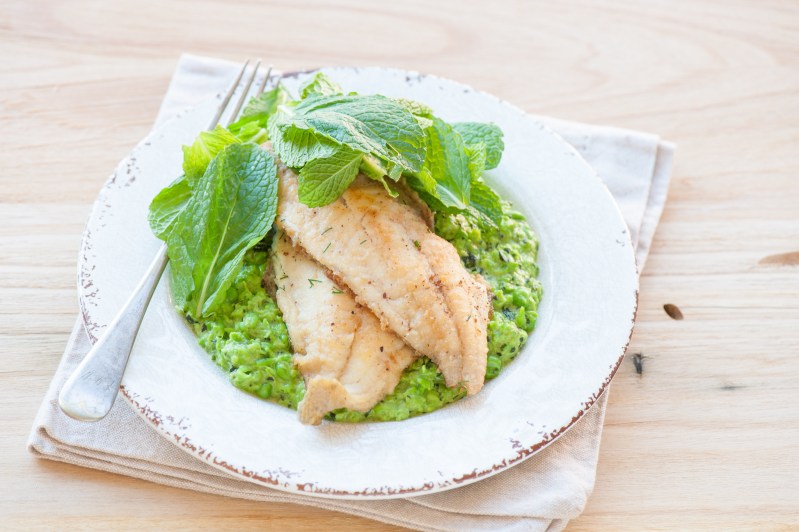
Are you thinking of changing your diet? If a healthier you is on the to-do list this year, you might consider the pescatarian diet. At its core, the pescatarian diet eliminates all meat except for fish and seafood. Plenty of research tells us eating red meat increases your chances of heart disease and even death by 3% to 7%. The study even suggests that eating poultry twice a week increases these risks by 4%.
You may have heard of the Blue Zone Diet. If you’re not familiar, Blue Zones are areas around the world where people live the longest, healthiest lives. The research was conducted by Dan Buettner, a National Geographic fellow and bestselling author. These zones are located in Japan, Italy, Costa Rica, Greece, and California. There are a number of practices you can put in place to follow the Blue Zone Diet if you wish. However, for our purposes, it’s simply important to note that the people living the longest and healthiest lives were neither vegans nor meat-eaters. They’re pescatarians.
What is the pescatarian diet?
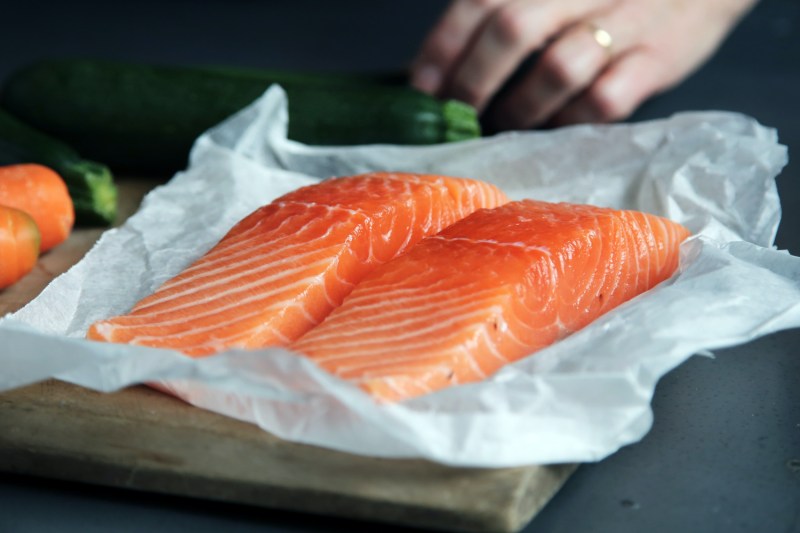
Pescatarians live somewhere in the middle of vegetarians and meat-eaters. While they don’t consume any beef, pork, or poultry, they do eat seafood like fish and shellfish. Aside from those protein sources, you can really fill your pescatarian diet with whatever you’d like. Fruit, vegetables, grain, corn, beans — the options are endless. What’s great about the pescatarian diet is that you can follow a number of other diet plans while still being a pescatarian.
- If you’re into the Keto diet, fatty fish like salmon and tuna will work great with your diet. You can still consume the other foods you were eating as part of the Keto diet.
- If Whole 30 is your thing, no problem. Just work some fish into your meals and skip the other meat.
- If you’re on the intermittent fasting train, more power to ya. When you do eventually eat something, just make sure it comes from the ocean, not the farm.
It’s really that easy to adapt to a pescatarian diet, and there are tons of benefits to doing so.
Are eggs a part of the pescatarian diet?
Yes, eggs can be a part of the pescatarian diet. As mentioned above, the core of a pescatarian diet is vegetarian foods, like fruits, vegetables, grains, legumes, nuts, and seeds, plus seafood. And many pescatarians also include eggs and dairy in their diet – but why? Here’s why. The core principle is getting protein and nutrients from fish, seafood, and plants. Eggs are a complete protein source that aligns with this focus, as they provide essential nutrients like vitamin B12, iron, and choline, which can be trickier to get enough of on a vegetarian-only diet. The pescatarian diet allows for some variation and including eggs broadens options and makes it easier to follow for some people.
Benefits of the pescatarian diet

Healthline outlines the benefits of eliminating other types of meat from your diet.
- Benefits include “a lower risk of obesity and chronic diseases like heart disease and diabetes.”
- Less weight gain, and if paired with the correct nutrition plan (limited carb-heavy foods), the possibility of weight loss.
- A lower environmental impact, since raising animals for food takes a lot of resources.
There are also a number of ethical reasons for not eating meat, including the treatment and slaughter of animals.
Drawbacks of the pescatarian diet
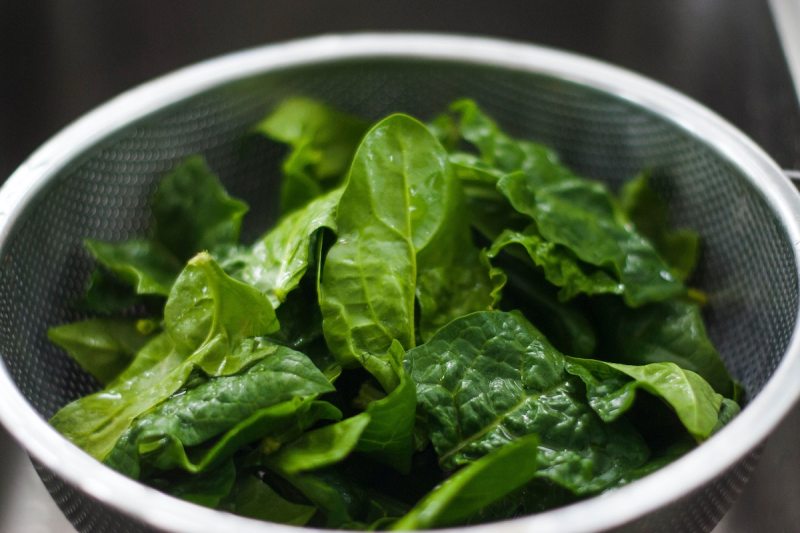
Whenever there are benefits, there are usually some drawbacks. Here are a few in relation to the pescatarian diet.
- Low in iron. Be sure to consume plenty of iron-rich veggies like spinach and broccoli.
- Fish contains mercury. Mackerel, shark, swordfish, and tuna all contain mercury. These fish are also some of the most overfished, however, so you should try to avoid them, anyway. Fish Wise is one group helping consumers make more responsible fish-buying choices.
- Cost. No doubt, fish can be kind of expensive. An ethically sourced piece of salmon will cost more than a chicken breast. It is suggested that fish should only be consumed in 3 oz portions, though, so while more expensive, consider it a treat. Also, because you’ve cut the chicken and steak out of your diet (meat is more expensive than vegetables), you’ll likely be able to keep the grocery bill pretty flat if you switch to only eating fish.
Pescatarian diet recipes
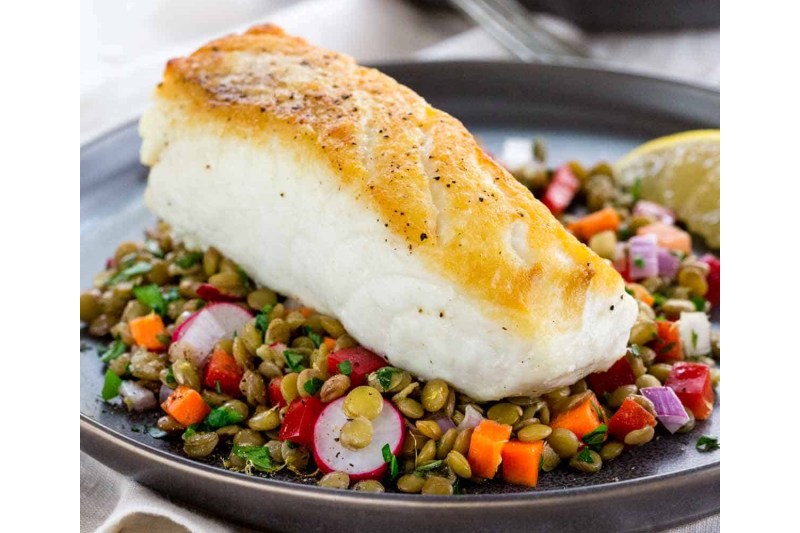
Roasted halibut
This recipe came from The Mediterranean Dish, and it’s super easy to make. The whole meal is roasted in the oven and only uses one pan.
Ingredients
For the sauce
- Zest of 2 lemons
- Juice of 2 lemons
- 1 cup Private Reserve Greek extra virgin olive oil
- 1 1/2 tablespoons freshly minced garlic
- 2 teaspoons dill weed
- 1 teaspoon seasoned salt, more for later
- 1/2 teaspoon ground black pepper
- 1 teaspoon dried oregano
- 1/2 to 3/4 teaspoon ground coriander
For the Fish
- 1 pound fresh green beans
- 1 pound cherry tomatoes
- 1 large yellow onion sliced into half-moons
- 1 1/2 pounds halibut fillet, sliced into 1 1/2-inch pieces
Method
- Preheat the oven to 425 degrees Fahrenheit.
- In a large mixing bowl, whisk the sauce ingredients together. Add the green beans, tomatoes, and onions and toss to coat with the sauce. With a large slotted spoon or spatula, transfer the vegetables to a large baking sheet (21 by 15 by 1-inch baking sheet, for example). Keep the vegetables to one side or one-half of the baking sheet and make sure they are spread out in one layer.
- Now, add the halibut fillet strips to the remaining sauce and toss to coat. Transfer the halibut fillet to the baking sheet next to the vegetables and pour any remaining sauce on top.
- Lightly sprinkle the halibut and vegetables with a little more seasoned salt.
- Bake in 425 degrees Fahreneheit heated oven for 15 minutes. Then transfer the baking sheet to the top oven rack and broil for another 3 minutes or so, watching carefully. The cherry tomatoes should begin to pop under the broiler.
- When ready, remove the baked halibut and vegetables from the oven. Serve with your favorite grain, Lebanese rice, or pasta.
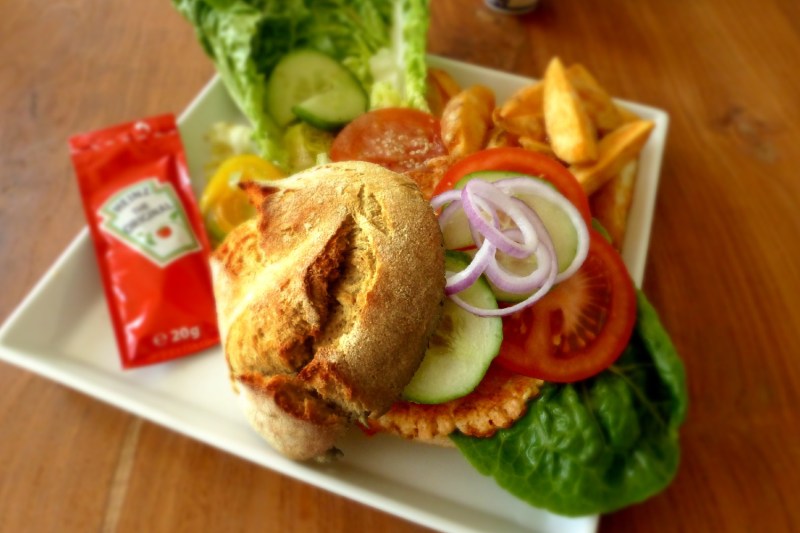
Salmon burgers
This recipe for salmon burgers came from Eating Well.
Ingredients
- 1/2 cup water
- 1/2 cup white vinegar
- 2 tablespoons honey
- 1/2 teaspoon salt
- 1 English cucumber, thinly sliced (about 3 cups)
- 1 shallot, thinly sliced, plus 1 shallot, minced, divided
- 3 (6-ounce) cans no-salt-added salmon, drained and flaked
- 2 large eggs, lightly beaten
- 1/4 cup panko breadcrumbs
- 2 tablespoons chopped fresh parsley
- 1 tablespoon chopped fresh dill, plus more for garnish
- 1 1/2 teaspoons minced fresh garlic
- 1 teaspoon lemon zest
- 1/4 teaspoon ground pepper
- 1 tablespoon olive oil
- 1/4 cup mayonnaise
- 4 whole-wheat burger buns, split and toasted, if desired
Method
- Bring the water, vinegar, honey, and salt to a boil in a small saucepan over high heat; remove from heat.
- Combine cucumber and sliced shallot in a medium bowl. Pour the vinegar mixture over the vegetables; set aside.
- Stir salmon, eggs, breadcrumbs, minced shallot, parsley, dill, garlic, lemon zest, and pepper in a large bowl until combined. Form the salmon mixture into four patties.
- Heat oil in a large nonstick skillet over medium heat. Add the patties and cook until golden brown, and an instant-read thermometer inserted in the center registers 145 degrees Fahrenheit, 4 to 5 minutes per side.
- Drain the pickled vegetables. Spread 1 tablespoon of mayonnaise on each bun. Top with a patty and about 1/4 cup pickles. Garnish with dill, if desired. Serve additional pickles on the side or save for another use. (The extra pickles will keep in the fridge for up to a week, stored in an airtight container.
There are a ton of other recipes out there. We suggest you experiment with different fish and forms of seafood to see which you like best. We think you’ll quickly find that you don’t miss meat that much after all. And if you already eat fish as part of your diet, but are looking to change up how you prepare it, consider smoking your fish.


